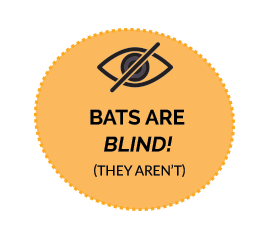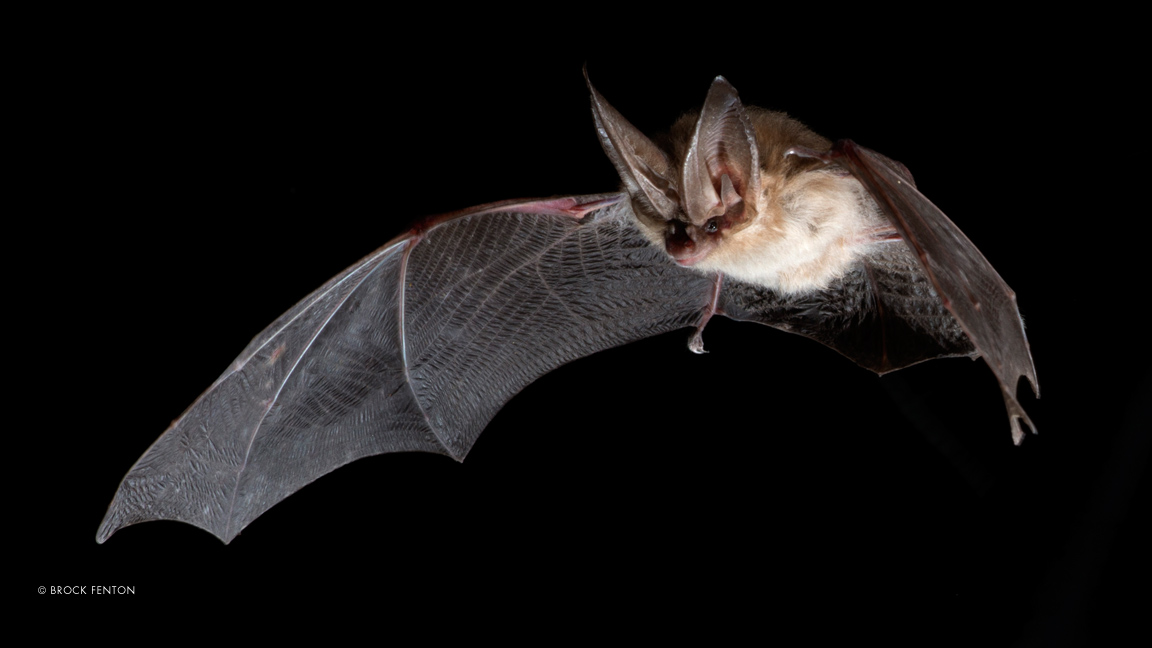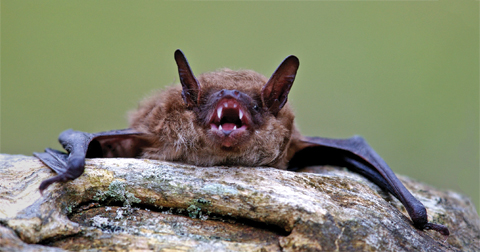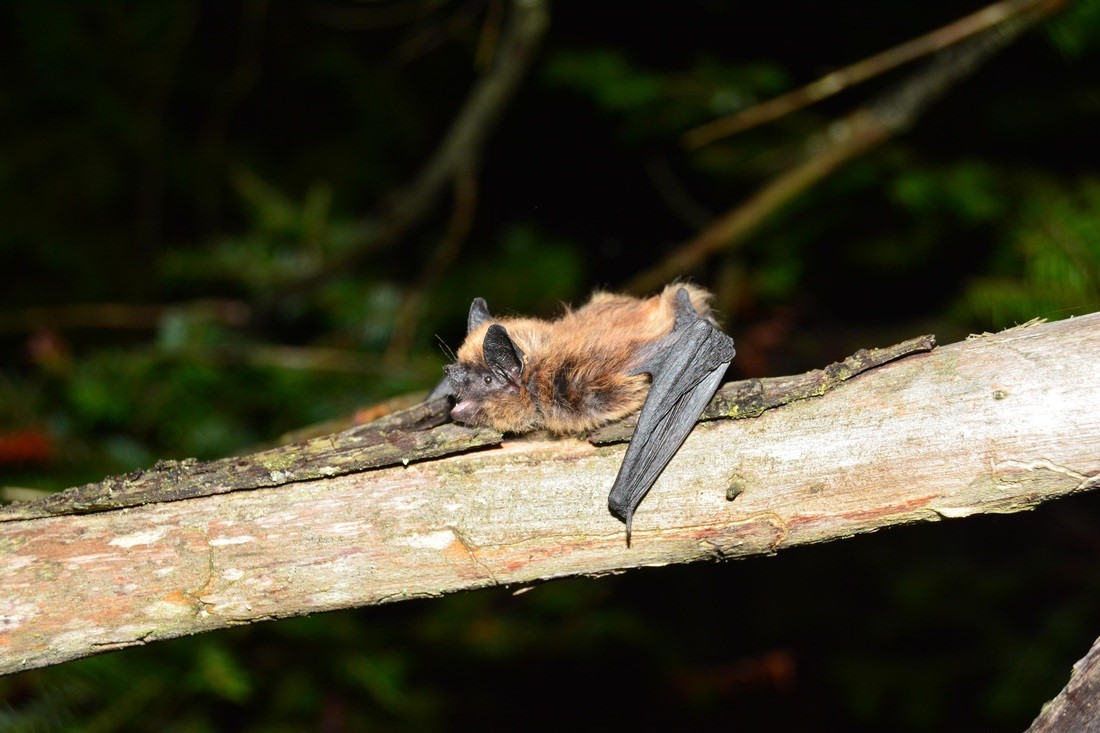You Should Hear the 'Batty' Things People Say About Bats!
Bats are one of the world’s most misunderstood species, yet they exist on every human-inhabited continent. There are so many myths tainting the image of these unique mammals. History has made them out to be scary creatures when in fact bats are important human allies, vital in the fight against pesky insects. In truth, the scariest thing about bats is this: they’re being decimated in Canada by a disease called White-nose Syndrome.
As humans, we’ve learned all too quickly how diseases can spread through closely gathered populations exposed to infection. Bats are no different. White-nose Syndrome has reduced bat populations by almost 95 per cent in eastern Canada, leading to several species being designated as Endangered. This summer, White-nose Syndrome was found on bats in Saskatchewan. Critical social distancing is impossible for bat populations headed back to their winter hibernation sites. As colonies instinctively gather together, there is a greater risk of contracting White-nose Syndrome. Clearly, it’s a frightening time to be a Canadian bat!




Blind as a Bat
wrong
Contrary to popular belief, bats are not blind. In fact, bats can “see” better than we can in the dark because they are equipped with a highly developed sense called echolocation. When using echolocation, bats produce a series of extremely high frequency chirps. These chirps are emitted in the form of sound waves that bounce off of objects and prey. When bounced off an object, these sound waves return to the bat in the form of an echo, thus helping the bat to navigate and hunt. These chirps are so high in frequency that they are inaudible to the human ear. The chirps that you hear from the bats as they emerge from their roosts are social calls, not echolocation.
Bats don’t get caught in your hair, but they may swoop around your head if there are bugs flying around. Think of it as being a natural form of bug repellant.
Bats Are Rodents
nope!
Bats aren’t even related to rodents. In fact, they’re more closely related to primates and lemurs than they are to mice or rats. Bats are part of their own order of mammals called Chiroptera which means hand-wing

All Bats Suck Blood
Only three of the 1,300+ bat species in the world consume blood and these species are found in Mexico as well as Central and South America. They lick blood off of cows, chickens and other animals. Not humans! So please stop worrying about bats. The bats that live here in Canada eat insects (take that mosquitos!), and play a very important role in pest control. In fact, they save the Canadian agricultural industry millions of dollars!
Bats Are Pests
Far from it!
Bats hold great ecological importance. Not only do bats’ foraging habits hold economic value, they also help to control pests that act as possible vectors of disease (mosquitos), as they consume thousands of insects in a single evening. They are also responsible for energy transfer in cave ecosystems.
By the numbers
- Cases involving bats and rabies in Canada are rare. There have been five fatal cases of people contracting rabies in Canada since the year 2000 — that’s less than one in 7.8 million people. In the 21st century, you’re more than 300 times more likely to be struck by lightning than to die from rabies (as calculated from lightning strike data from the Canadian Centre for Occupational Health and Safety).
- Bats have been labeled as commonly carrying rabies, yet less than one per cent of bats contract the disease, no higher than the rate in many other mammals like raccoons, skunks and foxes. Once infected with rabies, bats quickly become paralyzed and die, seldom becoming aggressive.
- A bat on the ground or seen during the day does not necessarily mean it has rabies. Juveniles in mid summer are just learning to fly and may end up on the ground or in odd places. Bats can not take off from the ground, they need to start from a height to take flight. Bats may also roost in the open at times.
- Rabies can live up to 24 hours on a deceased animal in warm conditions. In cold temperatures it can endure several days to weeks. The rabies virus becomes non-infectious once dry or exposed to sunlight.
- Globally, 95 percent of rabies cases occur in Africa and Asia.
- Since 2000, the incidence of rabies in wild animals has declined, mainly due to control programs (such as vaccinating wild populations)
Rabies
It is important to bear in mind if you’ve been in contact with a bat, the danger is the rabies virus, not the entire species that might be a carrier. All mammals can contract and transfer rabies, including bats, but more than 99 per cent of bats in Canada are not carriers. Thankfully rabies is highly treatable if detected in time. However, if left untreated, rabies is fatal to humans and by the time symptoms show up, it is often too late for intervention to be effective. This is why it is critical to seek medical attention for any known or suspected wild animal bite or scratch.
In general people should avoid coming in contact with any wildlife. It is also important to protect your pets from interacting with wildlife.
Known, suspected or potential bat contact could include:
- Handling a bat (alive or dead) with bare hands or thin gloves (even if there is no visible bite or scratch)
- Having a bat in a bedroom while a person is sleeping
- Making contact with a bat while it is flying (indoors or outdoors)
- A pet bringing you a live or dead bat
- Reaching inside or doing work on a bat house when bats are in it
Situations not likely to result in a bat contact:
- Bats living in attics but not entering living spaces
- A bat found in your living space provided it wasn’t in a bedroom while someone was sleeping
- Capturing a bat without touching it (ex. using a net or container)
- Contact with a bat (alive or dead) using thick leather gloves
- Performing an emergence survey (bat count) or checking bat houses following the CWF monitoring protocols
What to do in the event of a known or suspected contact with a bat:
- Because bat bites and scratches can be very small and may not be visible, the best approach is to err on the side of caution and seek medical attention if there is a chance a person has come in contact with a bat. This can also be true with other animals.
- Immediately clean any wound or point of contact with soap and water and flush repeatedly for 15 minutes.
- If the bat is still present, contact a wildlife control company to capture the bat so that it can be sent for testing.
- If the bat is deceased, contact the Canadian Wildlife Health Co-op to determine the next steps to have the bat tested.
- If rabies has been contracted, symptoms usually develop in three to eight weeks post exposure. But treatment needs to be administered before this happens.
Handling Bats
- Bats should never be handled by members of the public. Like all wild animals, they may bite in self-defense or if they are sick.
- CWF staff that capture, handle and tag bats are fully vaccinated against rabies and do so with the proper training and protective clothing.
Why we care about bats
Bats are critical to our economy and our ecosystem. CWF is working hard to ensure that bats have the habitats they need outside. Unfortunately, humans have encroached on these natural habitats, and housing and other developments have reduced the trees, caves or crevices where bats naturally live. This has led to bats having to adapt, resorting to using the human structures that have been put where there was once habitat.






